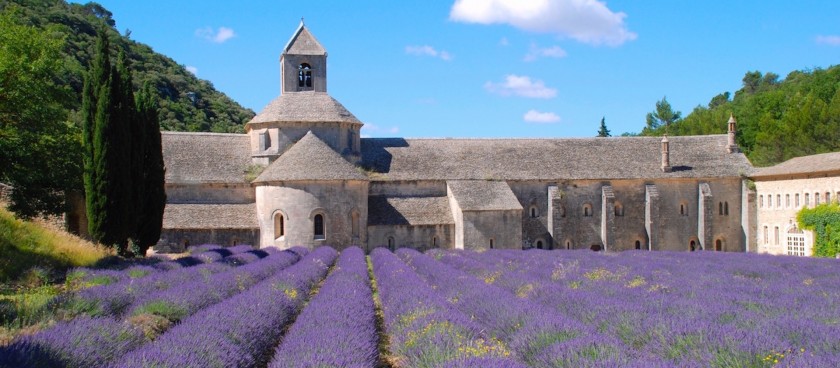
- #FR02
- 84220 Gordes, France
- +33490720586
- http://www.senanque.fr/
- Working hours*:
Monday - Saturday : 10:30, 13:30, 15:00, 16:30
Sunday : 13:45, 15:00, 16:30 - Prices*:
Adult : 8,50 €
Student - 5 €
Child (6 -17 years old) - 3,50 €, free from the 3rd child under 18 years old with his/her parents.
Free for child under 6 - * - opening and closing times as well as entrance prices, are subject to alterations without notice. Visitors are advised to check before visiting.
- 43.9282514, 5.1871705 Copy to clipboard Copy
-
#Churches , #Nature Objects
The Abbey of Sénanque was founded on the 9th of the Calends of July 1148 (23rd June) by a dozen of Cistercians monks coming from the monastery of Mazan, located in Ardèche. Our-Lady of Sénanque was the fourth Cistercian abbey founded in Provence, after Le Thoronet, Aiguebelle and Silvacane.
The abbey belongs to a powerful monastic order, hold by the aura of Saint Bernard.
At the foundation of Senanque, the Cistercians count more than 350 monasteries all over Europe. Based on a solid organization, they develop a specific architectural style, immediately recognizable.
In Sénanque, the community took possession of a 1 kilometer long and 300 meters wide valley. Despite the narrowness of the location, it perfectly corresponded to the instructions of the Cistercian order which specify than monasteries cannot be built in towns, villages or rural houses (chapter 9 of the Summa Cartae Caritatis).
Saint Benedict asked for monasteries to possess all the necessary things to live: water, a mill, a garden, a bakery, etc. in order that monks do not need to go outside, which is not beneficial for their souls.
The valley of Senanque presents all the materials needed for the construction as stone and wood. It’s isolated, with cultivable lands, pastures and especially, a river: the Senancole.
During the XIIth century, the climate, fresh and rainy, was different than nowadays: the river Sénancole was sufficient for the needs of the founding monks. Witnesses of that ancient strength, some remains are still visible at several places of the valley.
The name of the abbey is probably linked to this river: coming from the latin words sana aqua (pure water). According to the Summa Cartae Caritatis, each new foundation has to count twelve monks and one abbot, in order to remind the Christ and the Apostles.
The construction of the Abbey ended in the 1220’s, after more or less 60 years of works.
Our day
A community of Cistercian monks has been living in Sénanque since 1148, following the Rule of St. Benedict in the purest monastic tradition.
Seven times a day, the community gathers in the abbey church to celebrate the Divine Office.
The brothers of Sénanque dedicate their lives to prayer and labour.
Ora et labora (pray and work): even if the sentence does not appear in the Rule of St. Benedict, it sums up perfectly the monastic life, divided into prayer, work and lectio divina (spiritual reading).
“Idleness is the enemy of the soul” Rule of St. Benedict, ch.48. The working time does not divert us from prayer: it is necessary to stimulate silence, to strengthen obedience, to emphasize humility. It is a way to find God too.
Though the prayer is the centre of the life of the monk, a large part of his time is dedicated to work. It is a way to maintain the monastery and to obtain the livelihood of the community.